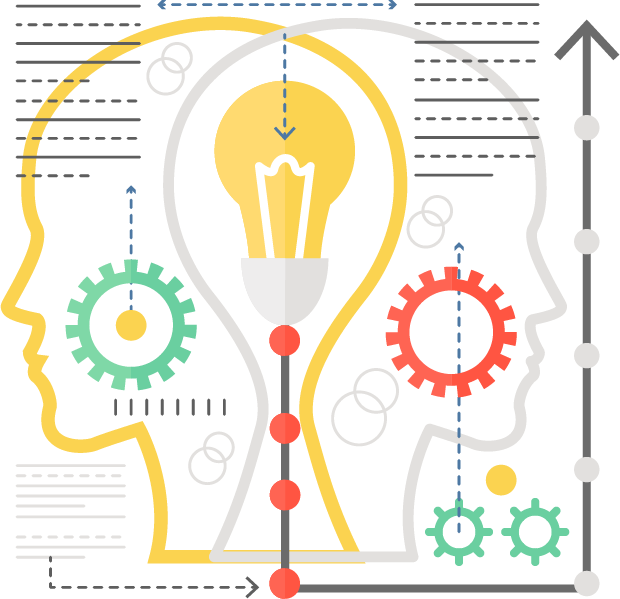LIMS Selection Services
Your Decisions Enriched
As a Lab, selecting the right LIMS is the most critical technology decision you will make
The most central technology component of any Laboratory is your LIMS ... or do you need a LIS? Understanding the difference, if applicable, and evaluating the right vendors is foremost in selecting the right platforms. Maybe you need a blend? Which systems bring the right mix, or may be you need two implementations, an LIS and a LIMS?Our experts have the experience and understanding of the Laboratory landscape to help you navigate the myriad of systems out there and select the right environment for your needs. Many of our experts have gone through the process themselves multiple times. Let us de-mystify the art of technology selection and put you on the right road for success.

Making That Crucial LIMS Selection Decision
Understanding the Distinction between LIMS vs. LIS in Laboratory Management
In the world of laboratory management, efficient data handling and streamlined processes are crucial for accurate and timely results. To achieve this, laboratories rely on specialized software systems known as LIMS and LIS. Although these acronyms may seem similar, they represent distinct solutions tailored for different laboratory environments. Understanding their unique functionalities and applications is crucial to selecting the right system for your situation.
Laboratory Information Management Systems (LIMS)
Laboratory Information Management Systems (LIMS) are designed primarily for research, testing, and scientific laboratories. LIMS serves as a comprehensive solution for managing and tracking laboratory data, samples, and processes. Its key focus areas include sample management, data analysis, workflow automation, and integration with various laboratory instruments and systems.Sample Tracking and Management enables laboratories to efficiently track and manage samples throughout their lifecycle, from collection to storage and analysis. Each sample is assigned a unique identifier, allowing researchers to monitor its progress and associated data.
Workflow Automation automates laboratory workflows, reducing manual errors and improving efficiency. It streamlines processes such as sample preparation, instrument calibration, and result analysis, ensuring smooth operations within the laboratory environment.
Integration with Laboratory Instruments seamlessly integrates with laboratory instruments and systems, enabling direct data transfer and reducing transcription errors. This integration enhances data accuracy and facilitates real-time monitoring of experiments and analyses.
Data Analysis and Reporting provides robust data analysis tools, allowing scientists to derive meaningful insights from the collected data. It supports the generation of comprehensive reports, aiding researchers in their decision-making processes and facilitating collaboration within the scientific community.
Regulatory considerations also play a big part in the industries where LIMS systems are employed. However, they are different regulations than that which a LIS would cover. Understanding the differences between, for example, CAP, HIPPA and 21 CFR Part 11 and how each system meets those regulations is a critical component when selecting the right system for your business.
Laboratory Information Systems (LIS)
Laboratory Information Systems (LIS) are specifically designed for clinical laboratories and healthcare facilities. LIS plays a vital role in managing patient-related laboratory information and test results, facilitating effective diagnosis, treatment, and monitoring of patients.Patient Demographics and Test Order Entry that integrates with hospital information systems (HIS) and electronic medical records (EMR) to retrieve and store patient demographics is a key requirement. It enables physicians to order laboratory tests electronically, ensuring accurate test requisition and seamless communication between the laboratory and other healthcare departments.
Sample Tracking and Result Reporting tracks samples throughout the testing process, ensuring proper identification and preventing mix-ups. It manages test results and generates comprehensive reports that are linked to the corresponding patient records, providing healthcare professionals with a comprehensive view of the patient's medical history.
Quality Control and Instrument Interfacing incorporates quality control measures to maintain the accuracy and reliability of laboratory test results. It monitors instrument performance, detects deviations, and alerts laboratory staff of potential issues. LIS also interfaces with laboratory instruments, facilitating automated data transfer and reducing manual transcription errors.
Regulatory Compliance plays a crucial role in ensuring compliance with regulatory standards and guidelines governing clinical laboratories. It assists in maintaining accurate records, tracking instrument calibrations, and generating audit trails, which are essential for inspections and accreditation processes.
CONTACT
